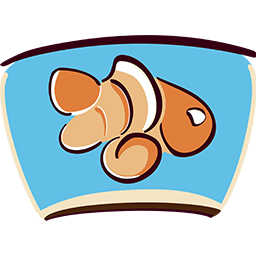Velvet
Velvet is a fish disease that gives the infected fish a gold dust appearance when viewed in almost any light setting. This disease is extremely similar to the lifecycle of Ich, and reproduces and spreads in a very similar manner.
Identification
In reality, every fish will come into contact with this parasite multiple times throughout its life, however, in most cases, the fish has a good immune system and/or has developed immunity to this parasite. Some of the major symptoms of velvet include a gold dust appearance when the fish swims throughout the water in the light (or if you shine a flashlight against the body of the fish in question). As the disease progresses the fish might start to try to rub against decorations, the substrate, and any equipment that is inside of the fish's water column. This disease can cause the fish to become lethargic, breathe heavily and rapidly (when swimming or near the top of the water's surface), overdevelop their slime coat, and lastly, it can cause death if not treated.
Pathology
To treat for velvet, we must first understand the life cycle that the parasites have. The first stage is what is known as the feeding stage where the trophonts live in the skin and/or scales of the fish and absorb nutrients from their bloodstream. In the proper tropical water temperatures, this stage can last up to six (6) days, with colder temperatures resulting in more days added to this stage. The second stage occurs when the trophonts start to mature into free-form living tomonts that break out of the skin and scales of the fish, and start to swim around in the water column. The third stage is where the tomonts repeatedly divide to form up to 256 dinospores, which swim about in the water column looking for a new fish host to attach themselves to. If a host is not found within two (2) days then they will die, otherwise, they will start this process all over again. The fourth and final stage that this parasite has is where the tomonts will keep on feeding off of the host, making the fish weaker and weaker immune system-wise until it is either treated or dies off.
Treatment and Medication
Several different medicines will poison the free-living stages of this parasite and kill it off within the water column. If the parasite is caught early on safer medicine can be used such as ones that contain acriflavine, or acridine. However if the parasite is not caught early on, tougher medicines that contain copper are highly effective. The only downside to using copper is that it is very toxic and/or lethal to many fish and invertebrates, along with most snails. When using any medicine, it is recommended to remove any carbon from the filter media and to also turn off any UV sterilizers or protein skimmers during usage. We recommend following the product's instructions on the bottle when using either of these products.

